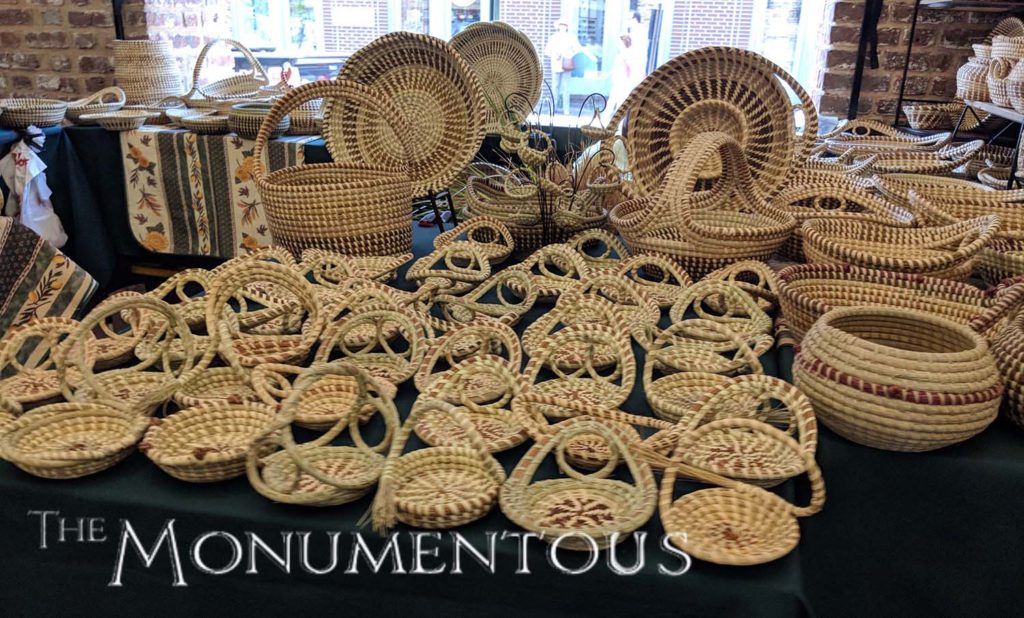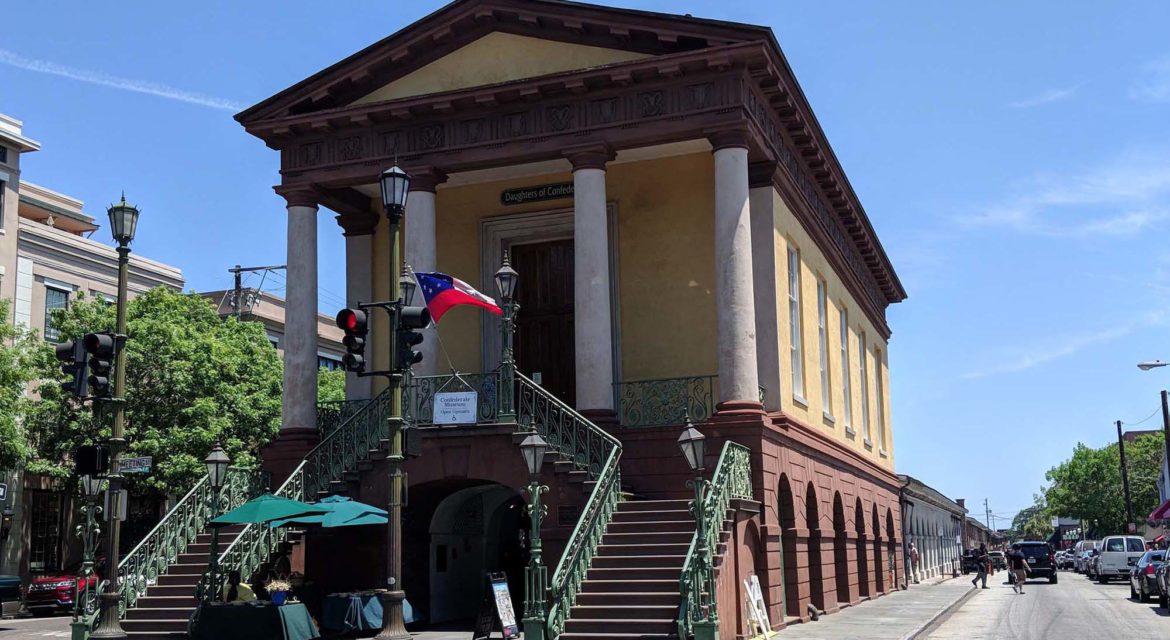 There are famous markets all across the world whose history goes back decades, centuries and even millennia. These central gathering areas were often a place for people to come together to buy and sell items, conduct business and socialize. That’s exactly what happened at the Charleston City Market when it first opened its doors in 1804, and the evolution of that concept is what has allowed it to become the cultural heart of Charleston, South Carolina.
There are famous markets all across the world whose history goes back decades, centuries and even millennia. These central gathering areas were often a place for people to come together to buy and sell items, conduct business and socialize. That’s exactly what happened at the Charleston City Market when it first opened its doors in 1804, and the evolution of that concept is what has allowed it to become the cultural heart of Charleston, South Carolina.
The Charleston City Market is built around vendors that sell everything from jewelry to food to sweetgrass baskets, but the building has come to mean something much more for residents and visitors. There is always something to see, do, taste, and take home at the market, but these activities are just part of the reason it has made such a monumentous impact on Charleston.

One of Charleston’s Oldest Public Facilities in Continuous Use
 Initially known as the Centre Market, Charleston’s City Market was developed as a replacement for a different market that had burned down in 1796. Throughout the 19th century, the market provided a convenient place for area farms and plantations to sell beef and produce, and also acted as a place for locals to gather and socialize. Sheds that stretched all the way to the waterfront originally housed vendors that sold everything from meat to fish to vegetables.
Initially known as the Centre Market, Charleston’s City Market was developed as a replacement for a different market that had burned down in 1796. Throughout the 19th century, the market provided a convenient place for area farms and plantations to sell beef and produce, and also acted as a place for locals to gather and socialize. Sheds that stretched all the way to the waterfront originally housed vendors that sold everything from meat to fish to vegetables.
Market Hall was completed in 1841, and was opened on the site of the original depot for country wagons. The upper room of the hall initially served as a large assembly room. Market Hall was later set up as a military recruiting office at the outbreak of the Civil War. It now houses Charleston’s Confederate Museum.
Charleston City Market is one of Charleston’s oldest public facilities in continuous use, but by the 1970’s, the rise of refrigeration and grocery stores fueled a decline. Following Hurricane Hugo in 1989, the building was restored by the City of Charleston and received a Carolopolis Award from the Preservation Society in January 2003. In 2010, the market sheds were completely restored by the city of Charleston in partnership with the city market preservation trust.
This history has defined the market that exists today, but one trip down and through the market allows visitors to experience why it has become such an important landmark.

Experiencing the Cultural Heart of Charleston
More than 300 vendors & 50 sweetgrass basket weavers have stands setup daily at the Charleston City Market, with stands and products that range from bath & body to entertainment to fine art. This variety is evident as visitors walk down the straight central aisle that runs the entire length of the building, with quick transitions from one vendor to the next.
 Those 50 sweetgrass basket weavers are just a hint of the focus on local products that are highlighted and featured at the market. The basket weavers are carrying on a special Charleston tradition that has been going on for over 300 years. It’s the only area where this particular type of basketry is practiced and makes the experience associated with walking the market especially notable.
Those 50 sweetgrass basket weavers are just a hint of the focus on local products that are highlighted and featured at the market. The basket weavers are carrying on a special Charleston tradition that has been going on for over 300 years. It’s the only area where this particular type of basketry is practiced and makes the experience associated with walking the market especially notable.
While the multiple sweetgrass basket weavers are especially notable, it’s the focus on local products and options that are more striking than anything else. Many cities have shops and stores where all of the items in them are the same, and none of those items were even made in that area. However, most of the items at the Charleston City Market can’t be found anywhere else, and the pride and uniqueness in many of these items is evident. Being able to purchase something that has been certified as being handmade in Charleston is a powerful draw, be it for a one-of-a-kind painting of the Charleston Harbor or a candle that was made in the city or a sweetgrass basket.
The ability to purchase a variety of items and experience what Charleston has to offer allows visitors to see the culture of the city in a whole new way, and that has created a sizable economic impact for the city and region.

The Economics of Charleston’s #1 Most-visited Attraction
The economic benefit that over 300 vendors represent is easy enough to calculate, but the fact that the market has transitioned away from food and grocery items has made it a destination for more than just residents. The variety of local items for sale at the market have contributed to it being Charleston’s #1 most-visited attraction, where visitors can come to purchase something authentic.
 It’s not just items for sale that pull in an audience though, since the market serves as the starting place for a variety of trips and tours of the city. Tickets are available for purchase right at the market, creating a single destination that allows visitors to do everything they want to do in the city, whether it’s exploring the best of Historic Charleston or hopping onto a horse and buggy ride.
It’s not just items for sale that pull in an audience though, since the market serves as the starting place for a variety of trips and tours of the city. Tickets are available for purchase right at the market, creating a single destination that allows visitors to do everything they want to do in the city, whether it’s exploring the best of Historic Charleston or hopping onto a horse and buggy ride.
At night, visitors get a totally new experience as The Charleston City Night Market showcases more than 100 talented artists and craftspeople. Running from April – December, the Night Market is a free event that has live entertainment and a festive atmosphere and provides visitors with a similar yet distinct experience depending on what time they’re there, similar to other monuments. With 100% locally made items for sale, this appeal to both residents and visitors has allowed the market to enter a special place in the culture.
The impact the market has made on the culture and economy of the area is considerable, and in doing so has cemented a powerful legacy for the market and city that is much different than what the people who were behind the original market had in mind.

A Legacy That’s About More than Merchandise and Money
 The creation of a monument like the Charleston City Market isn’t something that all comes together at once, and the present identity of the market is very much built on the past. The sheds that originally housed meat, vegetable, and fish vendors now display and sell very different products to a very different audience. That past is important, but it was the openness to change that has allowed the market to create a legacy that is about much more than merchandise and money.
The creation of a monument like the Charleston City Market isn’t something that all comes together at once, and the present identity of the market is very much built on the past. The sheds that originally housed meat, vegetable, and fish vendors now display and sell very different products to a very different audience. That past is important, but it was the openness to change that has allowed the market to create a legacy that is about much more than merchandise and money.
The changes at the market have been driven by the needs of the community, all of which are about creating and enabling something that is unique to Charleston.

